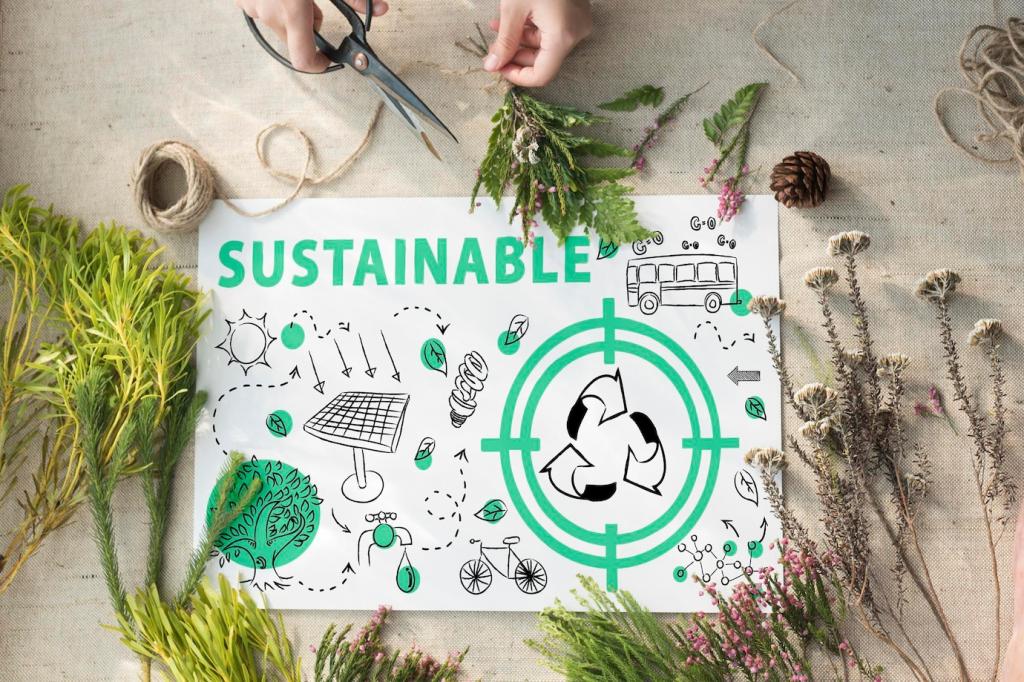
Eco-Friendly Interior Design Tips
Discover how to transform your living or working spaces into eco-friendly sanctuaries with thoughtful interior design choices. This guide is crafted to help you create a beautiful, sustainable environment that balances style with environmental responsibility. Explore a range of creative solutions and practical steps that are easy to adopt and can make a measurable impact on both your home and the planet.
Mindful Material Selection
Sustainable Wood Choices
Opt for wood products certified by credible organizations like the Forest Stewardship Council (FSC) to ensure your furniture and finishes come from managed forests that replenish and respect biodiversity. Avoid exotic woods unless they’re sustainably sourced, and consider alternatives such as bamboo or reclaimed timber. These selections help diminish deforestation and promote ethical forestry practices. Sustainable wood options often lend unique character to interiors, with variations in grain and history that add value and depth to your decor.
Recycled and Upcycled Materials
Selecting furniture and décor made from recycled or upcycled materials is a powerful way to embrace sustainability. Products crafted from repurposed metals, plastics, and glass save resources and energy that would otherwise be used to produce new materials. Upcycled vintage furnishings also add unique flair to your home, often bringing stories and craftsmanship that can’t be found in mass-produced items. In addition, these choices keep waste out of landfills and reduce demand for virgin resources.
Low-Impact Finishes
When it comes to paints, varnishes, and stains, opt for low-VOC (volatile organic compound) or zero-VOC products to protect your indoor air quality and the environment. Eco-friendly finishes made from plant-based oils and natural pigments offer long-lasting coverage without harmful emissions. Prioritizing these options contributes to healthier indoor environments, especially important for families with children or individuals sensitive to chemicals. The result is a space that’s not only beautiful but also safer to live in.
Smart Use of Natural Light
Maximizing Window Placement
Positioning and sizing windows strategically can make a world of difference in the brightness and efficiency of a room. Larger, well-placed windows capture more daylight and heat during colder seasons, leading to energy savings and a vibrant atmosphere. Even smaller spaces benefit from well-thought-out window arrangements that draw in natural light while maintaining privacy. Using clerestory or transom windows adds light to interior spaces without compromising wall space or privacy.
Light-Enhancing Design Elements
Reflective surfaces such as mirrors, glossy tiles, and light-colored walls amplify natural light, making even dim rooms feel open and airy. By balancing these elements with thoughtfully chosen textiles and finishes, you can avoid harsh glares while maximizing the effect of sunlight. Integrating glass doors and partitions also helps distribute light throughout the home, reducing the need for artificial lighting during daytime hours.
Eco-Friendly Window Treatments
Opt for window treatments made from organic or recycled materials to control sunlight while upholding your commitment to sustainability. Linen, organic cotton, and bamboo blinds or curtains are breathable, biodegradable, and offer an elegant aesthetic. Many eco-friendly drapes also provide insulation, reducing heating and cooling needs, and allow you to adjust the ambiance of your rooms while lessening your environmental impact.
Energy-Efficient Lighting Solutions
LED and Compact Fluorescent Bulbs
Switching to LED or compact fluorescent light bulbs is a practical step toward sustainability, as these bulbs use significantly less energy and last much longer than traditional incandescent options. LEDs come in various color temperatures and styles, providing flexibility for every room. Additionally, these bulbs produce less heat and are a safer choice for reducing fire risk in the home. By making this simple change, you contribute to global efforts to reduce energy consumption and greenhouse gas emissions.

Secondhand and Vintage Finds
Choosing secondhand or vintage furnishings helps reduce demand for new resources and minimizes waste by giving existing items a second life. Shop at thrift stores, local markets, or online platforms specializing in pre-loved décor to discover distinctive pieces with charm and history. Not only does this approach curb landfill contributions, but it also allows you to cultivate a space that reflects your personality and creativity, often at a more affordable price point.
Modular and Multi-Functional Furniture
Invest in furniture that is versatile and adaptable to changing needs, such as modular seating, expandable tables, or foldaway beds. These designs help maximize space and efficiency, making them ideal for smaller homes or those desiring a minimalist aesthetic. Multi-functional pieces are typically constructed with longevity in mind, enabling you to invest in fewer pieces over time and reduce overall consumption.

Plants as Natural Air Purifiers
Incorporating houseplants into your interior design is a natural, beautiful way to improve air quality. Many species, such as peace lilies, snake plants, and spider plants, are known to filter toxins, increase oxygen levels, and add vibrant greenery to your space. By integrating plants in stylish planters throughout your home, you bring nature indoors and support both aesthetics and wellness. Plants also create a calming ambiance that enhances your overall living experience.

Ventilation Strategies
Proper ventilation is fundamental for maintaining clean, healthy indoor air. Integrate operable windows and vents into your design for cross-ventilation, encouraging the flow of fresh air and the removal of pollutants. Where possible, choose energy-efficient ventilation systems that recycle heat or use natural air flow to minimize reliance on mechanical systems. This approach not only supports good health but can also keep energy usage in check.
Low-Flow Plumbing Fixtures
Install low-flow faucets, showerheads, and dual-flush toilets to significantly cut down on water consumption without sacrificing performance. These modern fixtures come in attractive designs and a range of finishes to suit any style, blending seamlessly with your interior while delivering meaningful savings. Over time, switching to efficient fixtures can make a substantial difference in your household’s water use and help preserve resources for the future.
Greywater Recycling Systems
Explore the possibility of integrating greywater recycling systems in your home, particularly for larger renovations. These systems capture water from sinks, showers, and washing machines to be reused for flushing toilets or irrigation. While installation may require an upfront investment, the long-term benefits in water conservation and reduced strain on municipal systems are remarkable. Embracing such innovations not only future-proofs your home but sets a positive example for sustainable living.
Indoor Water-Conserving Habits
Adopt daily routines that support water efficiency. Simple actions, such as turning off taps when not in use or promptly fixing leaks, can add up to significant savings. Educate family members and guests about the importance of water conservation and provide accessible options—such as timers in the shower or water-saving dishwashing techniques. Fostering a culture of mindfulness ensures that your eco-friendly efforts extend beyond design into everyday life.

Conscious Consumption
Before making new purchases, reflect on what you truly need and how each item will function in your space. Avoid impulse buying and instead opt for pieces that are versatile, durable, and timeless. By adopting this mindset, you naturally reduce clutter and landfill waste, allowing you to prioritize possessions that add genuine value to your life. Careful consumption is at the heart of a minimalist, eco-conscious design philosophy.
Repurposing and DIY Projects
Give existing pieces a new lease on life through creative repurposing or DIY refurbishments. Turn an old ladder into a bookshelf, update a tired chest of drawers with eco-friendly paint, or transform wine crates into modular storage. These projects keep materials out of the waste stream, encourage personal involvement in your décor, and result in truly one-of-a-kind spaces. Repurposing also fosters a greater appreciation for craftsmanship and reduces the demand for new products.
Recycling and Composting Systems
Make it easy for everyone in your household to recycle and compost by integrating designated bins that blend with your interior. Choose designs that are functional, discreet, and fit your décor to encourage regular use. Ensure you understand local recycling guidelines to maximize effectiveness. Setting up well-organized waste streams supports a cleaner living environment and reinforces the importance of environmental stewardship for all who visit your home.
